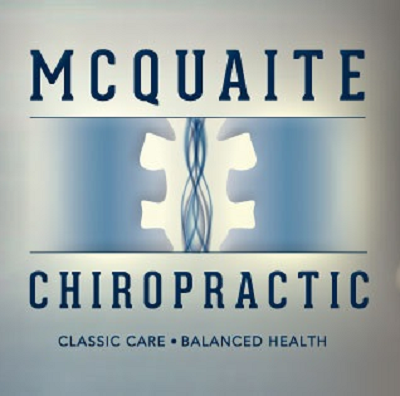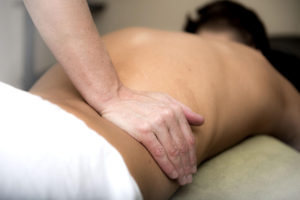
Jun 26, 2020 | back pain, Chiropractic Care, neck pain, neck pain relief
When was the last time you woke up with back or neck pain? If you said, “today,” and that’s typical for you, then it’s worth thinking about how you sleep.
As you can imagine, your sleeping position impacts your spinal health. Have you ever fallen asleep in a chair and woken up with a crick in your neck? If so, then your neck needed more support.
The entire purpose of pillows is to cradle your head and neck. Yet, you don’t want it to be too high or low. Ideally, your spine is in a neutral position when you sleep. And by neutral, we mean straight. When your spine is straight, then you’re not twisting it to one side or another for hours on end.
Do you tend to sleep with your pelvis twisted to one side or another? Or, do you sleep on your stomach? Neither of these is good sleeping positions to prevent back or neck pain because they put unnecessary pressure on your spine.
The Best Sleeping Positions to Prevent Back and Neck Pain
These probably won’t surprise you, but the best sleeping positions are on your back or side. You do want to keep your neck well cradled with a good pillow for you, which we’ll cover in a moment, but first, consider the back and side sleeping.
When you’re on your back, with your legs straight out and your arms by your side, your spine is in the straightest position. It’s very happy like this because your body weight is distributed evenly and completely supported. But if you’ve never been a back sleeper, it can be hard to try and train yourself. The easiest way is probably to lay on your back when you’re super tired and allow yourself to relax into the mattress. However, some people find sleeping on their back causes them to snore.
Side sleepers are also in a good place as long as you have a supportive pillow and keep your legs straight. If you’re using an arm for support under your head or pulling your legs up into your chest, then your spine isn’t supported evenly, and you could wake up with back or neck pain.
What’s your preferred sleeping position?
About Those Pillows
There’s a reason there so many types of pillows on the market. From down pillows to memory foam, there’s a pillow for everyone. The right one for you is supporting your neck and head and helping them stay in a straight line with your spine.
If you’re like a lot of people in the Doylestown area, you probably have at least 3 or 4 pillows in your house that you can try. Here’s an exercise you can do to assess them. Take the pillow, put it on your bed, and lie down in your preferred sleeping position. Notice if your neck feels like it’s tilting up or down. Which one feels like it keeps your spine the straightest? If the answer is none, then it may be time for a new pillow.
Of course, if you’re experiencing back and neck pain on a regular basis, it’s a good idea to have it checked out with Dr. Jeff McQuaite in Doylestown, PA. Find out more our neck pain treatment here.

Nov 19, 2019 | back pain, Chiropractic Care
If you’re considering trying chiropractic care for the first time, you may have a lot of questions.
 Questions like:
Questions like:
- Can it help my chronic back pain?
- Is chiropractic care safe?
- Do you need to go multiple times?
- Is it covered by insurance?
The answers are yes, yes, yes, probably.
According to the American Chiropractic Association, roughly 30 million Americans suffer with back pain every year. For some people, these are chronic conditions that cause you to miss work and seek all kinds of pain relief including chiropractic care. For others, it’s an occasional thing and you feel better with a chiropractic adjustment.
Is Chiropractic Safe?
In a word, yes.
A) Chiropractic care dates to 1895
B) Chiropractors attend four years of additional schooling after completing a pre-med program
C) It’s not habit-forming like opioids
Spinal manipulation, aka chiropractic care is considered a conservative approach to pain management and is recommended by traditional physicians.
In fact, you may not know that chiropractors attend a four-year rigorous training program after completing a full load of pre-med classes as an undergraduate. Then, they usually spend a year in a clinic working with patients like a residency program.
Chiropractic Care is a Gentle Approach to Pain Management
Your first visit includes a medical assessment and at our office, an x-ray. These offer a guide for your treatment plan which may include electrical stimulation (TENS), spinal decompression therapy, and/or traditional spinal manipulation.
Everyone receives an individual treatment plan.
Typically, the chiropractic adjustment involves you laying on the chiropractic table and we use a combination of body weight and quick movements to release pressure in your joints.
Many people experience immediate relief, though not all. In many cases, we’ll recommend 2-3 visits/week for a week or two to “jumpstart” the movement in your body. We may also make recommendations on diet/exercise/ergonomic tools to relieve pain. For example, resistance bands are an effective way to build strength.
For example, sitting slumped in front of the computer for hours a day will contribute to back and neck pain. So, if you raise your screen to eye level and get a chair that supports your back, you may have less pain. Taking these additional steps can go a long way toward reducing back, shoulder, and neck pain caused by poor posture.
Of course, there are dozens of reasons why you may have physical pain so you’ll want to come in for an assessment. Another common question is if we accept insurance. I can’t speak for all chiropractors but here at McQuaite Chiropractic in Doylestown, we accept most of them. Chiropractic care is a safe and effective way to treat pain.

Jul 26, 2019 | back pain, pain management
Let me guess, you suffer with chronic back pain? You’ve also heard that if you could reduce inflammation, you may have less back pain.
Is that right?
Great!

Yes, your food choices can help reduce inflammation
That means you’ve probably heard the reports of the dangers of inflammation. That left unchecked it can lead to rheumatoid arthritis, Crohn’s disease and more.
You also probably know that inflammation can cause that throbbing pain in your lower back.
Which means, it makes sense that reducing chronic inflammation would be a good thing and help reduce your back pain.
And you’d like to do it without drugs.
After all, you probably know that frequent use of over the counter pain meds can cause all manner of other problems including gastrointestinal bleeding. And prescription pain killers, well, the problems with those are all over the news.
So, what are you to do?
How can you reduce inflammation and have less back pain? And manage it without popping pills?
Glad you asked.
As an experienced back doctor aka a chiropractor, I have some ideas for you. Some involve diet and lifestyle changes while others include wellness treatments like massage therapy and chiropractic care.
Sure, it may be a little harder than popping a pill but in the long run it’s healthier. Besides, don’t you want to be as healthy as possible?
5 Ways to Reduce Inflammation
As you probably know, everything you do affects something else. If you eat a steady diet of junk food and your exercise consists of walking from your driveway to your door, then you’re likely to gain weight. No surprise there.
But what you might not know is how closely linked healthy habits are to reduced inflammation. Here are five lifestyle choices proven to reduce inflammation.
1- Eat Healthy – You didn’t think I would recommend a diet of fried food and high carbs did you? Sorry. Those can make inflammation worse, cause you to put on weight and generally head towards disease. Instead; think fruits and veggies, lean chicken, and wild caught salmon. These are the types of foods that will help you feel your best.
2- Exercise – Walking, yoga, or crossfit will all benefit you. Some research says as little as 20 minutes a day of exercise can reduce your inflammation. (Source) As you know, exercise also reduces stress and weight gain both of which are excellent benefits.
In too much pain to exercise? If you’re near Doylestown, Pa., come in for a consultation so we can see what’s really going on and get you to feeling better.
3– Chiropractic Treatments – Why does chiropractic care reduce inflammation? Because studies show regular adjustments can reduce your bodies’ production of a certain type of protein called cytokines. These proteins can cause inflammation so by reducing them, viola, your pain can be reduced. Some say chiropractic care can be as effective as NSAIDS.
Caveat: Everyone’s body and back pain is different so therefore your treatment plan is personalized based on your medical history.
4- Massage Therapy – Loosening tense muscles and ligaments not only feels soothing but it can also reduce inflammation and pain in your body. It’s also good to combine massage therapy with chiropractic adjustments because when your body is less tense, you’re usually more receptive to chiropractic adjustments and they can “last” longer.
As you can see, there are multiple ways to reduce inflammation. And reducing inflammation can help your body relax and relaxation will help reduce back pain.
5- Acupuncture – This ancient medical practice involves using small needles placed in strategic places on your body. If you’ve never experienced it, it can sound a little odd but some patients have had tremendous success with it for everything from back pain to cold relief.
As you can see, each of these contribute towards your goal of living a healthy lifestyle. You don’t have to be extreme to reap the benefits either. Eating healthy food and light exercise will go along way towards keeping you healthy.
Are you ready to try natural pain relief?

May 10, 2019 | back pain, pinched nerve
 Imagine your lower back.
Imagine your lower back.
It connects your lower body to your upper body via the spinal column, tissue, tendons, and miles of nerves. There’s a place for everything though it’s not hard for parts of your body to shift and sometimes get out of place.
Take a pinched nerve in your lower back for instance.
Why Do Nerves Get Pinched?
When a nerve is pinched is often because a bone, tendon, or other matter has shifted out of place and is pressing on the nerve.
According to The Mayo Clinic, “A pinched nerve occurs when too much pressure is applied to a nerve by surrounding tissues, such as bones, cartilage, muscles or tendons. This pressure disrupts the nerve’s function, causing pain, tingling, numbness or weakness.”
Sometimes a pinched nerve in the lower back is related to a herniated disc. Arthritis, a fall or injury, or other health matters can pinch a nerve.
What Are the Symptoms of a Pinched Nerve in the Lower Back?
No matter the cause of the pinched nerve in your lower back, it’s due to compression of the last five vertebrae. You may feel sharp pain, tingling, numbness, and weakness in your lower back all the way to your feet.
How is a Pinched Nerve Diagnosed?
A physical exam with your doctor will help determine if a pinched nerve is the cause of your lower back pain. Do you have a reduced range of motion? Are you experiencing balance problems?
Here at your Doylestown chiropractor, we’ll ask about your medical history. We’ll also conduct an x-ray to see what’s going on in your lower back. Nerves get pinched for many reasons. Our goal is to determine the source of your pain. That way, we can recommend treatment options and help you find relief.
Find Pinched Nerve Pain Relief
There are many ways you can find pinched nerve relief like these.
Gentle Yoga Stretches – If you’re not a yogi, try a beginner class or one that’s called Gentle Yoga or Yin Yoga. These classes typically use props like blankets and blocks to support your body. A skilled teacher will help you find postures that reduce the pressure on your nerve and lower back so that you can find relief.
Acupuncture – Traditional Chinese Medicine uses an ancient system called “meridians” to locate points on your body where tiny needles can be inserted. The needles stimulate a healing response in your body.
Massage Therapy – A skilled massage therapist will work deep into your tissues to help them loosen. Combined with chiropractic adjustments, massage can help your body benefit even more from chiropractic treatment. Why? Because while chiro helps your bones and tendons go back to their rightful places while massage helps them stay there.
Chiropractic Treatment – A chiropractic adjustment may be your quickest solution to pain relief. For many people, a few spinal manipulations will provide near-instant relief which is great for short term pain relief. We’ll craft a treatment plan for your long-term healing.
Of course, there’s no “one and done” solution for a pinched nerve in the lower back. Any treatment will require multiple applications for longer-term pain relief and you may find a combination of things works the best. If you’re in pain and in the Doylestown, PA area, come see us. We’d love to help.

Apr 11, 2019 | back pain
“My back went out” or “I threw my back out” are odd expressions but the pain is anything but odd.
 That sharp, stabbing back pain can bring you to your knees. Perhaps the only thing worse than the throbbing pain is not knowing when it might happen. It can strike at any time whether you’re doing physical activity like gardening or playing golf or simply bending over to feed the cat.
That sharp, stabbing back pain can bring you to your knees. Perhaps the only thing worse than the throbbing pain is not knowing when it might happen. It can strike at any time whether you’re doing physical activity like gardening or playing golf or simply bending over to feed the cat.
You might wonder how you can treat “having your back go out” until you can get medical treatment and how you can prevent it.
But first, what’s happening when your back “goes out”?
What’s happened one or more of the vertebrae has shifted position. If you can imagine the length of the spine and then imagine 1 or more of the vertebrae shifting out of its normal position and maybe even being stuck, then you have an inkling of what causes the pain.
Imagine your vertebrae like a stuck drawer in a dresser. You may jiggle it but it doesn’t come lose and fit back into its regular slot. In a way, that’s what’s happened with your back.
You can protect your back by maintaining spinal flexibility and strengthening your core muscles.
What Do When Your Back “Goes Out”
From back spasms to disc injury, there’s a lot going on when you have back pain. Your chiropractor can help reduce your back pain but what if happens late at night or you’re not able to get in to see your doctor right away?
Here’s how you can treat your back pain until you can get to the doctor.
- Lie on the floor – Chances are, you’ll be horizontal immediately, but lying on a hard surface like the floor will be more helpful than the comfortable mattress. Turn over on your stomach if you can and let your arms rest naturally at your sides. You can use a small towel to cushion your face if necessary. Breathe deeply and try to let muscles relax.
- Use Ice – Ice packs will help bring down any swelling.
- Take anti-inflammatories – Aleve and other such other the counter drugs can also reduce any inflammation.
How to Protect Your Back
A healthy back is far less likely to “go out” on you and if you don’t have pre-existing back injuries, you’re in luck because these tips will help you keep it healthy. If you do have pre-existing back injuries, these can still help.
1- Maintain a healthy weight – Extra weight, especially around your middle, can contribute to back pain because your body isn’t built for it.
2- Get Regular Exercise – Not only does this help maintain healthy weight but it also helps keep your back flexible.
Yoga is great for spinal health but even simple stretches will help. Be sure to stretch before gardening, golf, or other physical activity. Toe touches, knee raises, and side stretches are all helpful. Just take it slow if and don’t blast through them.
3- See the chiropractor – Your chiropractor “unsticks” your vertebrae and get it back into its proper “slot” in your back giving you a lot of relief. For the best results, follow your customized treatment plan.
4- Get a massage – Massage can also help relieve back pain by soothing the muscles that surround the vertebrae. In fact, regular massage combined with chiropractic treatments can be very helpful.
If you have a history of chronic back pain, and your back “goes out” frequently, call us. We’re in Doylestown, Pa. We’ll do an x-ray and see what’s going on in there and create a treatment plan based on your needs. You don’t have to live in pain.

Mar 27, 2019 | back pain

Is your golf swing the source of your back pain?
Avid golfers know the game is having a moment of bad press when it comes to back pain and spinal injuries.
But why?
Golfers have long dealt with spinal problems, rotated cuff injuries, and a host of other hazards. Is there really a greater risk these days or is it simply a way to grab headlines?
Turns out, there’s a growing concern that the game has changed putting more golfers as risk.
Here’s why.
Instead of those long, languid drives of golf greats like Jack Nicklaus, the new emphasis on strength and downswings can lead to an increased number of back injuries. A recent study in Journal of Neurosurgery: Spine, found that today’s “x-factor” swing contributes to additional strain on the spine.
Executed regularly by players like Tiger Woods, this “power” drive uses minimal hip movement and instead focuses on a big rotation in the shoulders. According to the study, the doctors say it twists the lumbar spine in a way that puts additional force on the spinal disc.
It’s not only the twisting that concerns the authors of this study from the Barrow Neurological Institute; they say the powerful downswing also causes concern because it puts stress on the spinal disc.
If you practice this swing, you may have felt it. The minimal hip turn that results in the powerful thwack of the ball also “crunches” your lumbar spine.
To achieve the necessary strength, many professional golfers take up weight training and even dabble in military style training.
The evidence is mounting that younger and younger professionals are having disc problems. For example, Tiger Woods has had more back surgeries you can count and some are blaming the shorter, tighter, harder swing.
Now you’re probably thinking, “I’m a weekend golfer. I’m not devoting my life to the sport, is this really applicable to me?”
Fair question. However, gauge your playing (and your body.) Do you have back pain after golfing? Have you ever experienced shooting pain on the golf course?
If your answer these questions is yes, it doesn’t really matter what your swing is like (at least, not as it compares to being pain-free.)
What matters is feeling better so you can play this Spring and Summer.
How to Protect Your Back While Golfing
There are a few ways you protect your back and continue to play golf for many years to come.
-
- Warm up before and after your game. Do some light stretches to loosen up your muscles including rotations. It’s tough on your body to go from cold muscles straight into exercise.
- Practice regular conditioning exercises in the gym. Maintaining flexibility is an important element of preventing injury. Here’s a list of the 10 best exercises for golfers.
- Get regular chiropractic care. As you know, golf is one-sided. The repetitive nature of the game puts pressure on your spine, yes. It can also cause tendons and discs to move out of place which can be painful.Regular chiropractic care can help prevent back pain and spinal injuries by keeping your body in good working order.
Where will you golf this spring?









